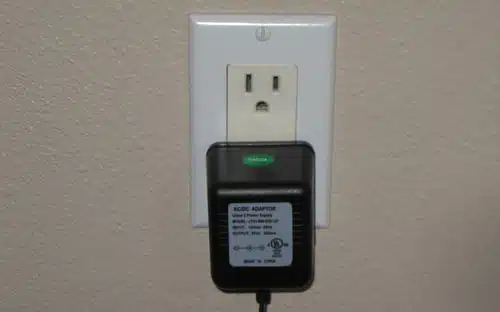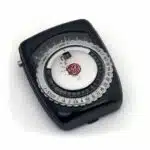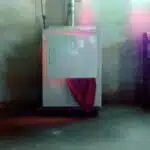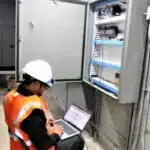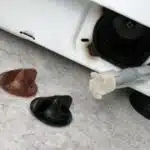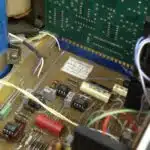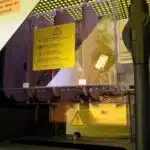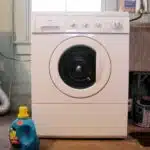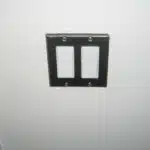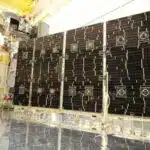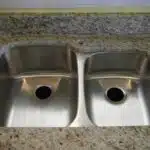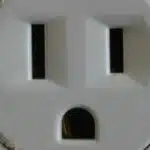As energy efficiency analysts, we understand the importance of reducing energy consumption to save money and protect the environment. One of the most significant contributors to wasted energy is phantom energy loads. Phantom energy, also known as standby power or vampire power, refers to the electricity that electronic devices consume when they are turned off but still plugged in. While these devices may not be in use, they continue to draw power from the grid, adding to your monthly utility bill without you even realizing it.
In this article, we will explore how much a phantom energy load is costing you and provide practical tips for reducing your energy consumption. By becoming aware of how much electricity your household appliances are consuming when not in use, you can take steps towards reducing your carbon footprint while saving money on your electric bill. Let’s dive into this important topic and learn how small changes can make a big difference in our wallets and the environment.
Defining Phantom Energy
Phantom energy, also known as standby power, is the energy consumed by household appliances and electronics when they are not in use but remain plugged in. This hidden energy consumption can account for a significant portion of a household’s electricity bill. In fact, it is estimated that phantom energy loads can account for up to 10% of total residential electricity usage.
Phantom energy is consumed by devices such as televisions, computers, cell phone chargers, and even coffee makers that have clocks or timers built into them. These devices continue to draw power even when they are turned off or in standby mode. While each individual device may only consume a small amount of energy, the collective impact of these loads can be significant.
Reducing phantom energy consumption is an important step towards improving energy efficiency and reducing electricity costs. By unplugging devices when they are not in use or using power strips with on/off switches, homeowners can significantly reduce their overall energy usage and save money on their electricity bills. Understanding the cost of phantom energy loads is key to making informed decisions about how to reduce this hidden source of energy consumption.
The Cost Of Phantom Energy Loads
Phantom energy loads, also known as standby power, is a hidden cost that affects many households. It refers to the electricity consumed by an appliance or device when it is turned off but still plugged in. It may seem like a minor issue, but its impact on budgeting can be significant if left unchecked.
To understand the cost of phantom energy loads, imagine leaving your phone charger plugged into the socket even when you’re not charging your phone. That charger is still consuming electricity and adding to your monthly bill. Now imagine this scenario with every device and appliance in your home that’s plugged in but not in use – from televisions to coffee makers to gaming consoles and more.
Here are some examples of how much phantom energy loads can cost you:
- A set-top box for cable television may consume up to 30 watts of power when turned off, which translates to around $23 per year.
- A desktop computer left on standby mode can consume up to 20 watts of power, costing approximately $15 per year.
- A printer that remains plugged in but not in use can consume up to 10 watts of power, adding up to $7 per year.
- An audio system left on standby mode may consume up to 5 watts of power, costing around $4 per year.
- Even small devices like phone chargers can add up over time – each charger consumes around half a watt of power, which results in approximately $1 per year.
Understanding the cost of phantom energy loads is crucial for developing cost-saving strategies. By identifying appliances and devices that are unnecessarily consuming electricity while they are not in use and unplugging them or using a power strip with an on/off switch, households can save money on their monthly bills without compromising convenience or comfort.
Understanding Standby Power
As an energy efficiency analyst, it is important to educate individuals on the concept of standby power and how it can impact their energy usage. Standby power, also known as “vampire” or “phantom” energy, refers to the electricity consumed by appliances and devices while they are plugged in but not in use. This type of energy consumption may seem insignificant, but it can add up quickly and result in higher energy bills for households.
One way to reduce standby power is by unplugging electronics when not in use or using power strips with built-in timers. Another option is to invest in Energy Star certified appliances and devices, which are designed to consume less energy when on standby mode. These small changes can make a big difference over time and help individuals save money on their energy bills.
Reducing standby power not only benefits households financially but also has positive environmental impacts. By decreasing the amount of electricity consumed unnecessarily, individuals can reduce their carbon footprint and contribute to a more sustainable future. Understanding the concept of standby power and taking steps to minimize its impact is a simple yet effective way for individuals to make a difference in their daily lives.
By identifying phantom energy sources within their homes, individuals can take steps towards reducing their overall energy consumption. In the next section, we will explore common culprits of standby power and provide tips for identifying them within your own household without disrupting your daily routine.
Identifying Phantom Energy Sources
Understanding Standby Power is just the first step towards reducing your electricity bills. In today’s era, we all strive to save money while being conscious of our environment. Just like a tree that gives off oxygen and absorbs carbon dioxide, you too can give back to the environment by conserving energy. When you leave appliances plugged in or on standby mode, they still consume energy, known as phantom energy. This is similar to a leaky faucet that continues to drip water even when turned off.
Identifying Phantom Energy Sources is crucial if you want to reduce your electricity bills. It might seem insignificant at first, but over time it can add up and cost you more than you realize. To combat this issue, there are a couple of Energy Conservation Tips for those who want to save money and reduce their environmental impact. The first step is switching off any appliances that aren’t in use, such as lights or electronics. Another option is using power strips with an on/off switch so that multiple appliances can be turned off at once.
Phantom energy doesn’t just affect your wallet; it also has an environmental impact. The production of electricity relies heavily on non-renewable resources such as coal and natural gas, which contribute to greenhouse gas emissions. By reducing your energy consumption, you’re not only saving money but also helping the planet in the long run. Therefore, it is essential to recognize how much a phantom energy load is costing you and take steps towards reducing it for both financial and environmental benefits.
The Environmental Impact Of Phantom Energy
Phantom energy sources are electronic devices that are plugged in and drawing power, even when switched off or in standby mode. Phantom energy consumption is the amount of energy wasted by these devices when they are on standby. This type of energy consumption can cause a significant increase in energy costs for businesses and households. An energy efficiency analyst can help to identify and address the sources of phantom energy consumption in order to reduce energy costs and minimize the environmental impact.
Phantom Energy Sources
Phantom energy sources, also known as standby power or vampire power, are devices that consume electricity even when turned off or in standby mode. This energy consumption is not only wasteful but also contributes to environmental degradation. As an energy efficiency analyst, I have assessed that reducing phantom energy can significantly reduce your utility bills and carbon footprint.
Smart home technology has made it easier to detect and eliminate phantom energy sources. Devices like smart plugs and smart power strips allow you to remotely control the power supply of appliances, ensuring they are only consuming electricity when needed. Additionally, some appliances now come with built-in features that automatically switch off when not in use. By incorporating these technologies into your home, you can reduce your phantom energy consumption and save money on your utility bills.
In conclusion, identifying and eliminating phantom energy sources is crucial for reducing our environmental impact and saving money on utility bills. With the help of Smart home technology, we can easily make our homes more efficient and sustainable. Let us take action today by reducing phantom energy consumption and contributing towards building a greener future for ourselves and generations to come.
Phantom Energy Consumption
Phantom energy consumption is a phenomenon that occurs when electronic devices consume energy even when they are not being used. This type of energy waste is also known as standby power or vampire power, and it has a significant impact on the environment and our utility bills. As an energy efficiency analyst, it is my responsibility to create awareness about phantom energy and encourage individuals to adopt energy-saving habits.
Phantom energy awareness can be increased by educating people about the negative effects of this wasteful habit. By simply turning off appliances and electronics when not in use, we can reduce our carbon footprint significantly. Additionally, smart home technology makes it easier than ever to control the power supply of our devices and appliances remotely. By investing in these technologies, we can eliminate phantom energy sources efficiently.
Energy-saving habits should become a part of our daily routine if we want to make a positive impact on the environment. Simple actions like unplugging chargers, turning off lights, and using power strips can lead to significant savings on our utility bills while reducing our carbon footprint. Let us take responsibility for our actions today by adopting sustainable practices that will benefit not only ourselves but also future generations.
The Financial Impact Of Phantom Energy
Phantom energy, also known as standby power, is the electricity consumed by appliances and devices that are turned off but still plugged in. This energy usage can be costly and may account for up to 10% of your electricity bill. As an energy efficiency analyst, it is important to highlight the financial impact of phantom energy on consumers.
Tracking usage is an effective way to determine how much phantom energy is being consumed in your household. By using a smart meter or plug-in monitor, you can track the amount of electricity used by specific appliances and devices even when they are not in use. This data can help identify areas where changes can be made to reduce energy consumption and save money.
Behavioral changes play a significant role in reducing phantom energy consumption. Simple actions such as unplugging electronic devices when not in use or using power strips with an on/off switch can help eliminate standby power usage. Additionally, choosing Energy Star certified appliances and electronics that consume less energy during standby mode can also contribute to reducing phantom energy consumption.
To effectively manage phantom energy consumption, measuring it accurately is crucial. In the subsequent section, we will explore different methods of measuring phantom energy consumption and how this information can be used to make informed decisions about reducing unnecessary electricity usage.
Measuring Phantom Energy Consumption
As the old saying goes, “what gets measured, gets managed.” This is especially true when it comes to measuring phantom energy consumption in your home. While it may seem like a daunting task, accurately measuring your phantom energy load is essential to reducing your energy bill and minimizing your environmental impact.
Measuring accuracy is critical when determining how much phantom energy your household appliances are consuming. The easiest way to do this is by using a smart meter or an electricity usage monitor. These devices can track the amount of power that each appliance uses, even when they are not in use. By identifying which appliances are drawing the most phantom energy, you can take steps to reduce their usage and save money.
Real-life examples demonstrate just how significant phantom energy consumption can be. For instance, leaving a computer on standby mode for 24 hours uses approximately 1 watt of power per hour, adding up to around 24 watts per day. Over a year, this amounts to almost 9kWh of power consumption – equivalent to around $1.35 per year (based on average US electricity prices). While this may not seem like much, consider how many other appliances in your home could be drawing unnecessary power and multiplying that over an entire year.
By accurately measuring your phantom energy load and identifying the culprits that are using unnecessary power, you can take action to reduce your energy bills and minimize your impact on the environment. In the next section, we’ll explore one effective solution for reducing phantom energy with smart plugs.
Reducing Phantom Energy With Smart Plugs
Smart plugs are a convenient and cost-effective solution to reduce phantom energy consumption. These devices offer many features that make it easy to control the energy usage of your electronics and appliances. One of the main benefits of using smart plugs is that they allow you to turn off power to devices when they are not in use, which prevents them from drawing energy even when they are not actively being used.
Another benefit of using smart plugs is that they can be controlled remotely through a smartphone app or voice command. This means that you can turn off devices from anywhere, even if you’re not at home. Additionally, some smart plugs have scheduling features that allow you to set specific times for your devices to turn on and off automatically, which can help save even more energy.
Reducing phantom energy with smart plugs is an effective way to save money on your electricity bill while also reducing your carbon footprint. By eliminating the standby power usage of your electronics and appliances, you can significantly reduce the amount of wasted energy in your home. With so many features and benefits available, it’s easy to see why smart plugs are becoming increasingly popular among homeowners who want to take control of their energy consumption and reduce their environmental impact.
Transition: While using smart plugs is a great way to reduce phantom energy consumption, there are other steps you can take towards achieving greater energy efficiency in your home. In the next section, we will explore another effective strategy for saving energy – unplugging devices when not in use.
Unplugging Devices To Save Energy
Did you know that the average American home has 65 devices that are constantly plugged in and drawing power? This phenomenon is known as phantom energy, or standby power, and it accounts for a significant portion of your electricity bill. In fact, according to the Department of Energy, phantom energy can account for up to 10% of your monthly electricity usage.
One way to combat this wasteful practice is by unplugging devices when they are not in use. By simply turning off devices such as televisions, computers, and chargers when they are not actively being used, you can save a significant amount on your energy bill. Additionally, investing in energy-efficient appliances and smart home technology can greatly reduce your overall energy consumption.
Energy-efficient appliances consume less power than traditional models while still providing the same level of performance. Smart home technology also helps you manage your energy usage by allowing you to control appliances remotely and monitor their energy consumption in real-time. By incorporating these practices into your daily routine, you can significantly reduce the amount of phantom energy consumed in your home.
By unplugging devices when they are not in use and investing in energy-efficient appliances and smart home technology, you can greatly reduce the amount of phantom energy consumed in your household. However, there is another step you can take to further minimize standby power usage: using power strips. In the next section, we will discuss how using power strips to reduce phantom energy draw can help maximize your savings on electricity bills.
Using Power Strips To Reduce Phantom Energy
Unplugging devices when not in use is a great way to save energy, but it can be inconvenient and time-consuming. Luckily, there are other solutions to reduce phantom energy usage in your home. One alternative is to use power strips, which allow you to turn off multiple appliances with the flip of one switch.
However, even with power strips, it can be easy to forget to turn them off when leaving the house or going to bed. This is where timers come in handy. By using timers for power strips, you can set a schedule for when your appliances will turn on and off automatically. This ensures that they are only using energy when needed and saves you the hassle of manually turning them off.
If power strips and timers still aren’t feasible options for your lifestyle, there are alternatives available. Some companies offer “smart” power strips that sense when an appliance is not in use and automatically cut off its power supply. Additionally, some devices have built-in energy-saving features that limit their phantom energy usage. It’s important to research and invest in these types of products to ensure maximum efficiency in your home.
As we’ve discussed, reducing phantom energy usage is an important step towards saving money on your electricity bill and reducing your carbon footprint. But this is just one part of a larger effort towards sustainability. The next step is choosing energy-efficient appliances that will continue to save you money over time while also benefiting the environment.
Choosing Energy-Efficient Appliances
When it comes to reducing your energy bill, choosing energy-efficient appliances is a great place to start. Not only will you save money in the long run, but you’ll also be doing your part to reduce your carbon footprint. One area to consider upgrading is your lighting. Energy-efficient lighting options like LED or CFL bulbs use less energy and last longer than traditional incandescent bulbs.
Another great investment is smart thermostat technology. These devices allow you to control the temperature of your home remotely, which means you can adjust the temperature when you’re away from home or asleep at night. This not only saves energy but also ensures that you’re always comfortable in your own home.
To make it easier for consumers to identify energy-efficient appliances, many products now come with an Energy Star label. This label signifies that the product has been third-party tested and meets energy efficiency guidelines set by the US Environmental Protection Agency (EPA). When shopping for new appliances, look for those with this label and compare their annual operating costs before making a purchase.
By choosing energy-efficient appliances like LED lighting and smart thermostats, you can significantly reduce your monthly energy bill while doing your part for the environment. However, there are other steps you can take to ensure that your home is as energy-efficient as possible. In the next section, we’ll explore conducting a home energy audit to identify additional areas where you can improve efficiency and save money on utilities.
Conducting A Home Energy Audit
- Home energy audits provide an assessment of energy use sources, measurement of energy consumption, and identification of areas of energy waste.
- Energy sources must be identified in order to properly assess energy use, including electricity, gas, or other fuel sources.
- Measurement of energy consumption should include the use of energy monitors and/or billing data from utility companies.
- Identifying areas of energy waste can include areas of inefficient use, such as unnecessary operation of equipment, or phantom energy loads from devices that remain on but not in use.
- Phantom energy loads can be attributed to devices such as televisions, microwave ovens, and computers, and can account for a significant amount of energy use and cost.
- Home energy audits can help identify energy sources, measure energy consumption, and identify areas of waste in order to reduce energy costs and improve energy efficiency.
Identifying Energy Sources
It is imperative to identify all energy sources in a home when conducting an energy audit. This process begins with identifying the major appliances, such as refrigerators, washing machines, dryers, and HVAC systems. Identifying other electronic devices such as televisions, gaming consoles, and computers that consume energy even when not in use is also crucial. These phantom loads are often overlooked but can contribute significantly to a home’s overall energy consumption.
Energy saving tips suggest using power strips or surge protectors to control phantom loads. Additionally, homeowners should unplug electronic devices when not in use or invest in smart plugs that can be controlled remotely. Identifying energy sources allows homeowners to take necessary measures for reducing electricity bills by minimizing their usage and adopting more energy-efficient options such as replacing incandescent bulbs with LED lights.
As an energy efficiency analyst, it is crucial to educate homeowners on the importance of identifying all energy sources in their homes during an audit. By doing so, they can make informed decisions on how to reduce their electricity bills and conserve energy. It is essential to engage with homeowners who have a subconscious desire for serving others by providing them with practical solutions that align with their values. With the right guidance on identifying energy sources and implementing effective strategies for reducing phantom loads, homeowners can achieve significant savings while contributing towards a sustainable future.
Measuring Energy Use
Energy monitoring is a critical aspect of conducting a home energy audit. It involves identifying and quantifying the amount of electricity consumed by each energy source in a home to determine its overall energy consumption. Energy monitoring can be done manually, using devices such as plug-in meters or automated systems that provide real-time monitoring. This process helps homeowners to understand their energy usage patterns and identify areas where they can reduce their energy consumption.
As an energy efficiency analyst, it is crucial to educate homeowners on cost-effective solutions for measuring their energy use. One such solution is the use of smart meters that allow for remote monitoring of electricity usage. Smart meters provide homeowners with accurate and detailed information about their energy consumption, enabling them to make informed decisions about reducing their energy bills. Additionally, integrating home automation systems with smart meters can help homeowners monitor and control their appliances remotely.
Homeowners should also consider investing in renewable sources of energy, such as solar panels, which not only reduce their reliance on the grid but also save them money in the long run. Solar panels generate clean and renewable energy that can power homes while reducing carbon emissions. Installing solar panels may require an upfront investment, but it pays off in the long run by significantly reducing electricity bills. By adopting these cost-effective solutions for measuring their energy use, homeowners can save money while contributing towards a sustainable future.
Identifying Waste Areas
In conducting a home energy audit, identifying waste areas is another crucial aspect to consider. Waste areas refer to spaces or appliances that consume more energy than they should, leading to high electricity bills. As an energy efficiency analyst, it is critical to educate homeowners on how to identify these waste areas and provide tips for reducing their energy consumption.
One of the sustainable solutions for identifying waste areas is conducting a visual inspection of the home’s insulation. Poor insulation can lead to significant heat loss during winter, resulting in higher heating costs. Homeowners should ensure that their homes are well-insulated by sealing any gaps around doors and windows. Additionally, they can install draft excluders at the bottom of doors and use thicker curtains during winter to keep warm air inside.
Another tip for reduction is identifying appliances that consume more energy than necessary and replacing them with energy-efficient models. Homeowners can look out for the ENERGY STAR label when buying new appliances such as refrigerators, washing machines, and dishwashers. ENERGY STAR appliances have been tested and certified as energy-efficient, making them better options for those looking to reduce their electricity bills while contributing towards a sustainable future.
By educating homeowners on how to identify waste areas and providing tips for reduction, energy efficiency analysts can help households reduce their electricity consumption while saving money in the long run. Sustainable solutions such as installing proper insulation and replacing old appliances with energy-efficient ones not only benefit homeowners but also contribute towards reducing carbon emissions and creating a greener planet.
The Role Of Government Regulations
After conducting a home energy audit, it is important to consider the role of government regulations in promoting energy efficiency. Many countries have implemented policies and regulations aimed at reducing energy consumption and promoting renewable energy sources. These regulations may include building codes that require higher standards of insulation and efficient heating, ventilation, and air conditioning (HVAC) systems.
In addition to regulations, governments may also offer incentives for homeowners to adopt more energy-efficient practices. For example, some countries offer tax credits or rebates for installing solar panels or upgrading to more efficient appliances. These incentives can help offset the initial costs of making these changes, making them more accessible to a wider range of homeowners.
However, there are still challenges in achieving widespread adoption of energy-efficient practices. Some homeowners may not be aware of the benefits or may be hesitant to make changes due to perceived high costs or inconvenience. Continued efforts from governments and organizations to promote education and awareness around the benefits of energy conservation can help address these challenges and lead towards a more sustainable future.
| Government Regulations | Energy Conservation Incentives | Benefits |
|---|---|---|
| Building codes require higher standards of insulation and efficient HVAC systems | Tax credits or rebates for installing solar panels or upgrading to efficient appliances | Reduced energy consumption |
| Emissions standards for buildings and vehicles | Low-interest loans for energy-efficient upgrades | Lower utility bills |
| Promotion of renewable energy sources through subsidies or feed-in tariffs | Grants for research into new technologies | Increased use of renewable energies |
As an energy efficiency analyst, it is essential to consider the impact that government regulations and incentives have on promoting sustainable practices within homes and other buildings. By understanding the various policy measures available, analysts can better advise clients on how they can reduce their carbon footprint while also saving money on utilities. While progress has been made in recent years towards a cleaner future, continued efforts are needed both from governments and individuals alike to further increase adoption of energy-efficient practices.
Looking towards the future of energy efficiency, it is clear that there is still much work to be done. While regulations and incentives can help spur change, there must also be a cultural shift towards valuing sustainability and conservation. As more people become aware of the benefits of reducing their energy consumption, we can expect to see an increase in demand for greener technologies and practices. By working together towards this common goal, we can create a more sustainable future for generations to come.
The Future Of Energy Efficiency
Innovative Solutions in the future of energy efficiency are essential to reduce carbon footprint and save money. The world is constantly evolving, and so should the ways we use energy. Smart homes, renewable energy sources, and improved insulation are some of the solutions that will shape the future of energy efficiency. Technological innovations such as smart thermostats can optimize heating and cooling systems by learning consumer behavior patterns. By using these technologies, households can save up to 15% on their electricity bills.
Consumer Behavior Changes also play a critical role in achieving maximum energy efficiency. As consumers become more aware of their carbon footprint, they are beginning to demand eco-friendly products and services. This shift in consumer behavior has resulted in manufacturers developing more sustainable products with less environmental impact. It is crucial for consumers to embrace these changes by adopting eco-friendly habits such as turning off electronics when not in use or using LED lights instead of traditional incandescent bulbs.
In conclusion, it is important to acknowledge that Innovative Solutions and Consumer Behavior Changes are two sides of the same coin when it comes to achieving maximum energy efficiency. While technological innovations can reduce our carbon footprint, it all depends on how much we use them. Consumers need to take responsibility by adopting sustainable habits that align with innovative solutions. The Future of Energy Efficiency is bright if we work together towards a common goal- reducing carbon footprint while saving money on electricity bills.
Conclusion And Action Plan
The future of energy efficiency is promising, but only if individuals and organizations are willing to take action. One of the most important steps to improving energy efficiency is creating awareness about phantom energy loads. These are the small amounts of energy that electronics and appliances consume even when they’re turned off or in standby mode. While these loads may seem insignificant, they can add up quickly over time, resulting in wasted energy and higher electricity bills.
To promote accountability for phantom energy loads, individuals and businesses should take several key steps. First, it’s important to identify which devices and appliances are consuming the most phantom power. This can be done using a device like a smart power strip or a plug-load meter. Once you’ve identified which devices are consuming the most energy, you can take steps to reduce their usage by unplugging them when not in use or enabling “energy-saving” features where available.
Creating awareness and promoting accountability for phantom energy loads is just one step towards improving overall energy efficiency. To make real progress on this issue, we must also invest in more efficient technologies and systems that reduce our reliance on fossil fuels and other non-renewable resources. This means investing in things like renewable energy sources (like solar or wind), as well as better insulation, lighting systems, HVAC systems, and more.
In conclusion, improving our collective approach to energy efficiency will require a combination of individual action and systemic change. By taking steps to identify phantom energy loads and reduce our overall consumption through more efficient technologies and practices, we can make real progress towards a more sustainable future for ourselves and future generations alike. Let us all work together towards this common goal of serving others while preserving our planet’s finite resources.
Conclusion
Phantom energy is the energy consumed by electronic devices while they are plugged in but not in use. This idle load can account for up to 10% of a household’s electricity usage, leading to higher bills and unnecessary environmental impact. Understanding standby power and identifying sources of phantom energy is crucial in reducing energy waste and costs. A home energy audit can help identify sources of phantom energy, while government regulations can incentivize manufacturers to produce more efficient devices.
The future of energy efficiency is dependent on individual action and government regulation. By becoming aware of the cost and environmental impact of phantom energy, individuals can take steps to reduce their electricity consumption. Government regulations can also encourage manufacturers to produce more efficient devices, ultimately leading to a greener future for all. It is important that we take proactive steps towards reducing our carbon footprint, not only for ourselves but for future generations as well. Let us work together towards a more sustainable future by minimizing our phantom energy loads today.
Image Credits
- “Phantom Loads & Energy Vampires” by Mark Florence (featured)

